Learn which foods represent the letters in the acronyms GBOMBS by Dr. Joel Fuhrman and FGOALS by Dr. Will Bulsiewicz, and what are their benefits.
Moreover, for a similar list by Dr. Michael Greger, the author of How Not to Die and How Not to Diet, go and read The Daily Dozen Checklist article.
Watch me explain it all and prepare 3 salad bowls in the below video!
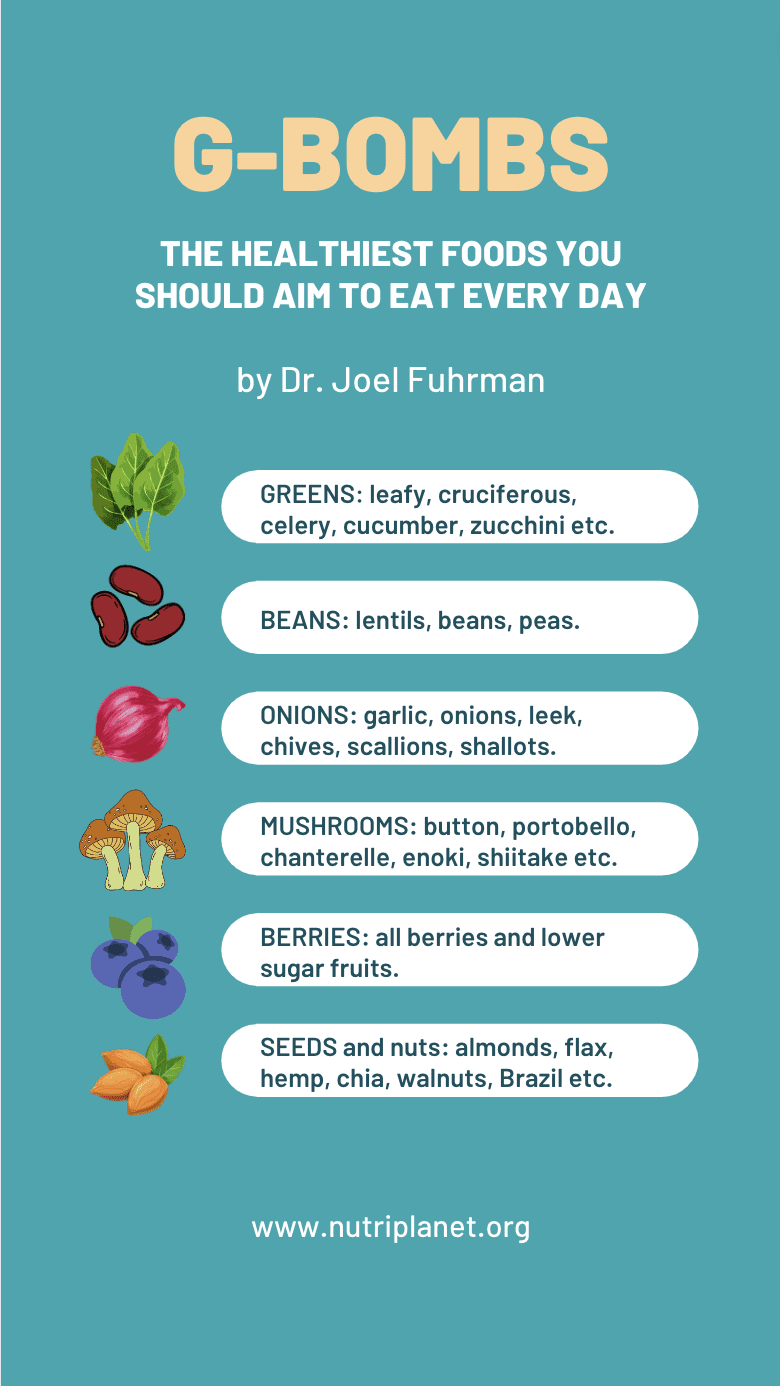
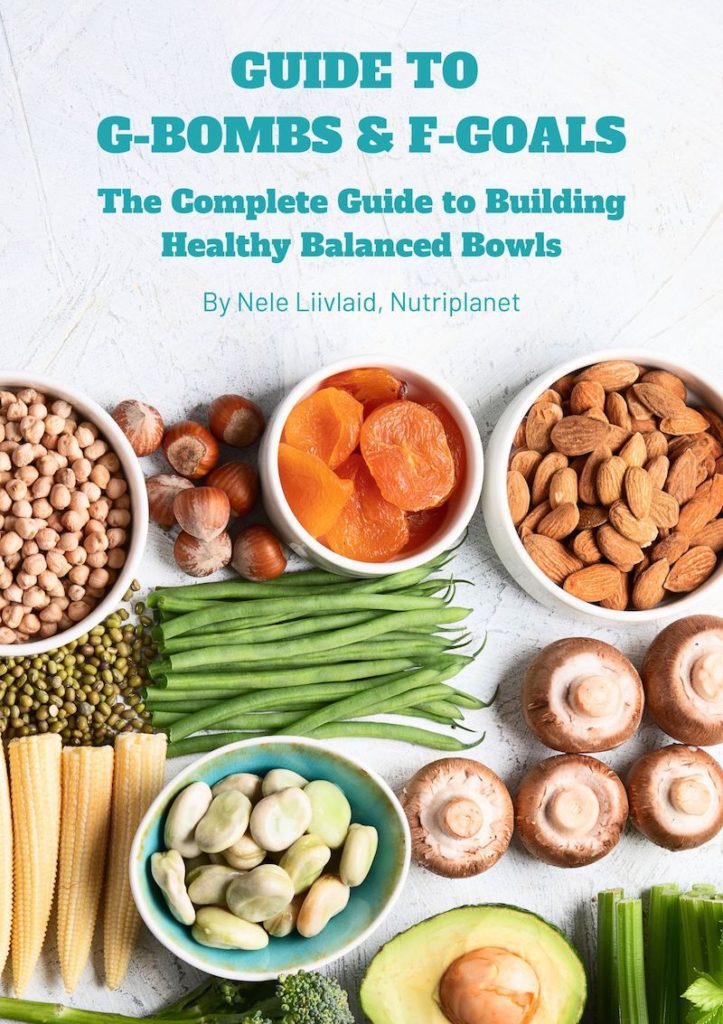
Step-by-step visual guide to building your own balanced bowls.
What are GBOMBS?
GBOMBS is an acronym invented by Dr. Joel Fuhrman and it stands for greens, beans, onions, mushrooms, berries, and seeds. These are the foods that you should aim to eat every single day as they’re the most nutrient dense and have amazing disease fighting capacity.
G is for Greens
Cruciferous vegetables include arugula, bok choy, broccoli, Brussels sprouts, cabbage, cauliflower, collard greens, kale, mustard greens, and watercress. Other green vegetables include asparagus, celery, cucumber, green beans, lettuces, Swiss chard, spinach, and zucchini.
Green vegetables are the most nutrient-dense of all foods. They contain phytochemicals that protect blood vessels and protect against inflammation. Furthermore, they also reduce oxidative stress, which is a major contributor to cardiovascular disease and cancer. All green vegetables are rich in folate and carotenoids, specifically lutein and zeaxanthin, that promote healthy vision.
B is for Beans
Adzuki, black, cannellini, chickpea, edamame, green peas, lentils, kidney, navy, pinto, snow peas, white beans, mung beans.
Beans and other legumes are the most nutrient-dense starch sources and are nutritionally superior to whole grains.
O is for Onions
Onions, garlic, scallions, chives, leeks, shallots.
These vegetables are known for their characteristic organosulfur compounds that are responsible for their anti-cancer properties. Like the isothiocyanates (ITCs) in cruciferous vegetables, these organosulfur compounds are released when these vegetables are chopped, crushed or chewed.
Therefore, eat them raw or wait 10 minutes after chopping before you start cooking them.
M is for Mushrooms
Chanterelle, cremini, maitake, oyster, porcini, portobello, enoki, Lion’s mane, shiitake, white button.
Mushrooms contain unique, beneficial phytochemicals, such as the potent antioxidant ergothioneine, immunomodulating beta glucans, substances with anti-estrogen activity that help prevent breast cancer, and prebiotic polysaccharides that promote a healthy gut microbiome.
It is recommended to cook mushrooms because several raw culinary mushrooms contain a potentially carcinogenic substance called agaritine. Cooking mushrooms significantly reduces their agaritine content.
B is for Berries
Blackberries, blueberries, cranberries, mulberries, raspberries, strawberries.
Berries and pomegranate arils are some of the lowest sugar fruits, rich in nutrients and phytochemicals. Greater berry consumption has been linked to reduced risk of diabetes, cardiovascular disease, and cancers.
S is for Seeds
Almonds, chia seeds, flaxseeds, hemp seeds, Mediterranean pine nuts, pistachios, pumpkin seeds, sesame seeds, walnuts.
Raw seeds and nuts are healthful, whole-food fat sources. They are rich in a spectrum of micronutrients, including phytosterols, minerals, and antioxidants. Nuts reduce oxidative stress, lower cholesterol, improve blood vessel function, help with weight maintenance, and lower the glycemic load of meals.
Flax, chia, and hemp seeds are rich sources of omega-3 fats.

Step-by-step visual guide to building your own balanced bowls.
What are FGOALS?
F-GOALS is an acronym created by Dr. Will Bulsiewicz, the author of Fibre Fuelled. The principal is the same – you should eat those foods every day to live long and healthy.
Citing Dr. Will Bulsiewicz from his book Fibre Fuelled: “Here are my favourite Fibre Fuelled foods, conveniently organized into an acronym to make them easy to remember. These are the foods I try to sneak in as often as possible, but they are most powerful in combination and when you eat them with more plant varieties.”
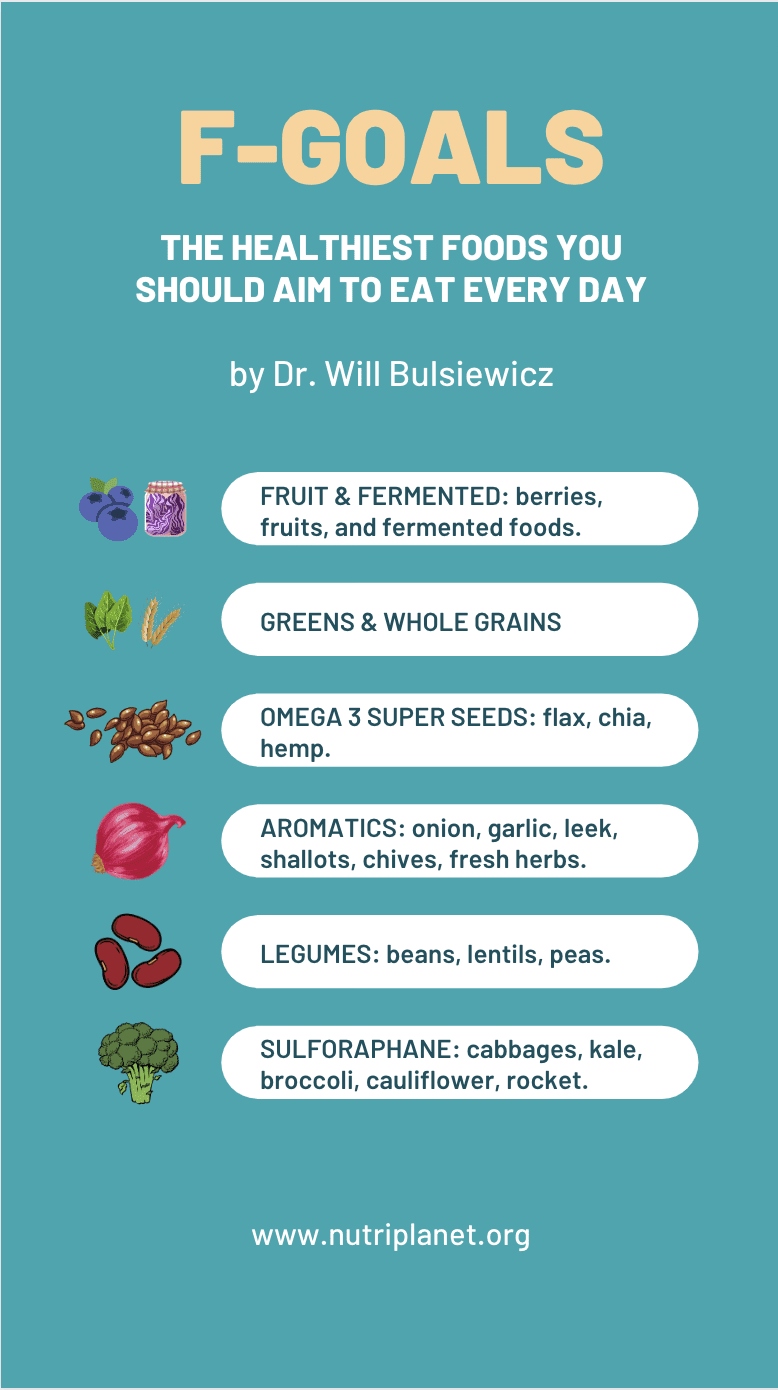
F is for Fruit and Fermented
All fruits, berries and fermented foods like sauerkraut, kimchi, natto, miso.
G is for Greens and Grains
Think spring greens, kale, rocket, spinach, cos lettuce, pak choi, watercress, Swiss chard, tender stem broccoli, sorrel, escarole, kohlrabi, and more.
Even the leaves of some favourite root veggies like beetroot, turnip, dandelion, radish, and carrots are edible and offer more variety in the green category.
Grains are preferably whole cooked grains (not pasta or bread), that is whole spelt or wheat berries, millet, barley groats, buckwheat, sorghum, farro, quinoa, rice.
O is for Omega 3 Super Seeds
Especially flax and chia seeds but also hemp seeds.
A is for Aromatics
These are all the flavour foods. Onion, garlic, basil. Try to opt for fresh whenever possible.
Others in this category are leeks, shallots, chives, and spring onions. allium vegetables are jam-packed with nutrients: vitamins B1, B2, B3, B6, C, E, K, folate, iron, magnesium, phosphorus, sodium, and zinc.
Alliums contain aromatic organosulfur compounds that are responsible for their smell, their taste, and their health benefits.
When fresh garlic or onions are chopped or crushed, an enzyme called alliinase is activated and converts alliin into allicin. It takes ten minutes for the enzyme to activate the allicin, a compound that has antibacterial, antifungal, antiparasitic, and even antiviral properties.
So, chop and then wait for 10 minutes before you start cooking with them.
The allicin appears to target the bad guys like multi-drug-resistant enterotoxigenic E. coli and Candida albicans. And it promotes the growth of Bifidobacteria and other healthy microbes in the gut. It’s worth noting that alliums are also an excellent source of prebiotic fibre.
L is for Legumes
All beans, lentils, and peas.
Beans act as an anti-diabetes and weight-loss food because they are digested slowly, having a stabilizing effect on blood sugar, which promotes satiety and helps to prevent food cravings. Plus they contain soluble fiber, which lowers cholesterol levels. [source]
S is for Sulforaphane
Sulforaphane found in cruciferous veggies like broccoli, especially broccoli sprouts, kale, rocket, cabbage, cauliflower, and Brussels sprouts.
An Extra S for Seaweed
Both, Dr. Will Bulsiewicz and Dr. Joel Fuhrman also mention seaweeds.
Seaweed is a fantastic way to add diversity into your diet because, not only is it high in fibre, but it has prebiotic fibre.
Moreover, seaweeds are an essential source of dietary iodine if you’re relying on plants as your main source of food.
GBOMBS vs FGOALS
Similarities
Essentially, those to guidelines are very similar. They both include greens, grains, legumes, nuts and seeds, allium family vegetables, and berries.
Seaweeds don’t have their own letter in either acronym, but both authors acknowledge their importance in a balanced healthy menu.
Differences
First, FGOALS includes fermented foods and emphasises the importance of omega 3-rich seeds.
Also, cruciferous vegetables have their own letter, whereas in GBOMBS they are included under greens category.
Finally, mushrooms are not separately mentioned in the FGOALS acronym, but their benefits are discussed in Fibre Fuelled book.
What Would I Add to GBOMBS and FGOALS?
In fact, there are two items or categories I’d add to the list of foods one could aim to eat every day.
Turmeric
First, turmeric, because it is the single most anti-inflammatory food. Besides that, it also has powerful carcinogen-blocking effects.
Curcumin appears to play a role helping to block every stage of cancer transformation, proliferation, and invasion. It may help before carcinogens even get to our cells. A study back in 1987 investigated the effects of curcumin on the DNA-mutating ability of several toxins. And they found that curcumin was “an effective antimutagen against several environmental and standard substances”. [source]
Is it better to take curcumin supplements or eat the turmeric root as whole food?
Only limited studies have compared the potential of turmeric with curcumin, but some suggest turmeric, the whole food, may work even better. This group of researchers at the Anderson Cancer Centre in Texas pitted curcumin and turmeric against seven different types of human cancer cells.
Curcumin works against breast cancer cells, but turmeric, the whole food, works even better. They found that turmeric was more potent compared to curcumin, suggesting that components other than curcumin can also contribute to anti-cancer activities.
Most clinical studies treating diseases in people have used curcumin supplements, as opposed to turmeric. But none have tried using turmeric components other than curcumin. However, even curcumin-free turmeric shows anti-inflammatory and anticancer activities. Although curcumin is believed to account for most activities of turmeric, research over the past decade has indicated that curcumin-free turmeric is as effective as, or even more effective than, curcumin-containing turmeric. [source]
Dr. Michael Greger, in his book How Not to Die recommends eating a quarter of a teaspoon of turmeric every day.
Bitter Foods
Secondly, I’d aim to eat the bitter foods to aid digestion at least with my main meals. Bitter foods stimulate your digestion by helping increase the amount of digestive secretions in your stomach that help break down food more quickly and effectively.
The common bitter foods are arugula, coffee, chamomile, dill, dandelion greens, Jerusalem artichokes, saffron, kale, sesame seeds, turmeric, ginger, grapefruit, peppermint, cocoa, eggplant, green tea, brussels sprouts, liquorice, cloves, anise, fennel.
While coffee, green tea, and cocoa are bitter foods, they should not be consumed along with foods as they may inhibit nutrient absorption. Leave at least an hour between your meal and any of the mentioned bitter foods.
It’s easy to include into your meals: arugula, dill, dandelion greens, Jerusalem artichoke, kale, saffron, sesame seeds, ginger, eggplant, Brussels sprouts, cloves, fennel, and anise. Alternatively, enjoy a digestive tea about an hour after eating: ginger, chamomile, peppermint, liquorice, anise, fennel. [source]

Step-by-step visual guide to building your own balanced bowls.
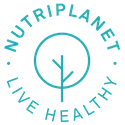
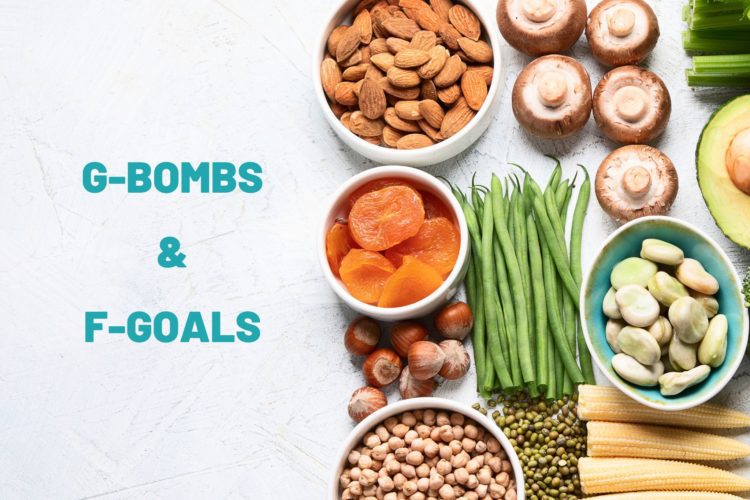













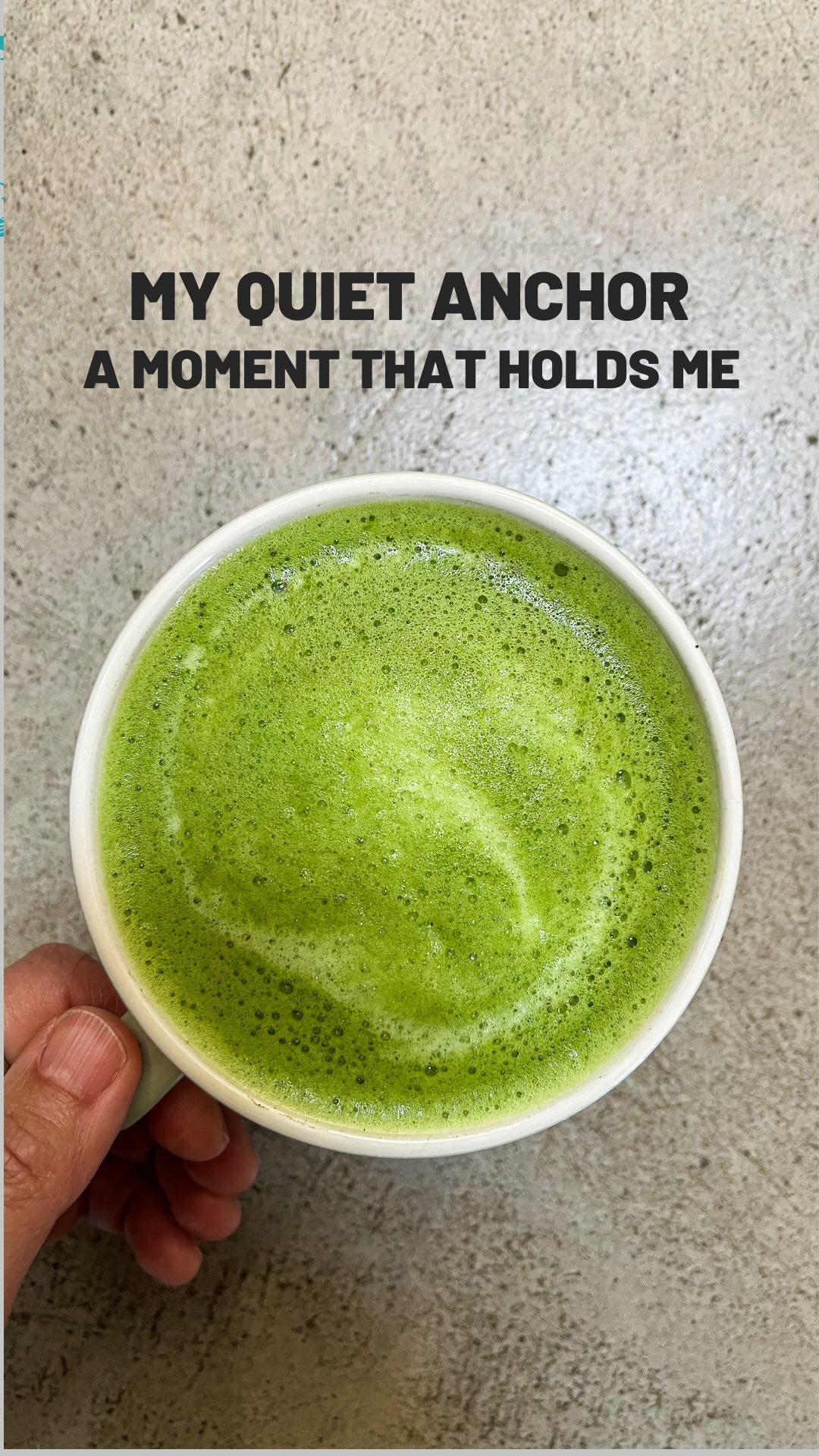











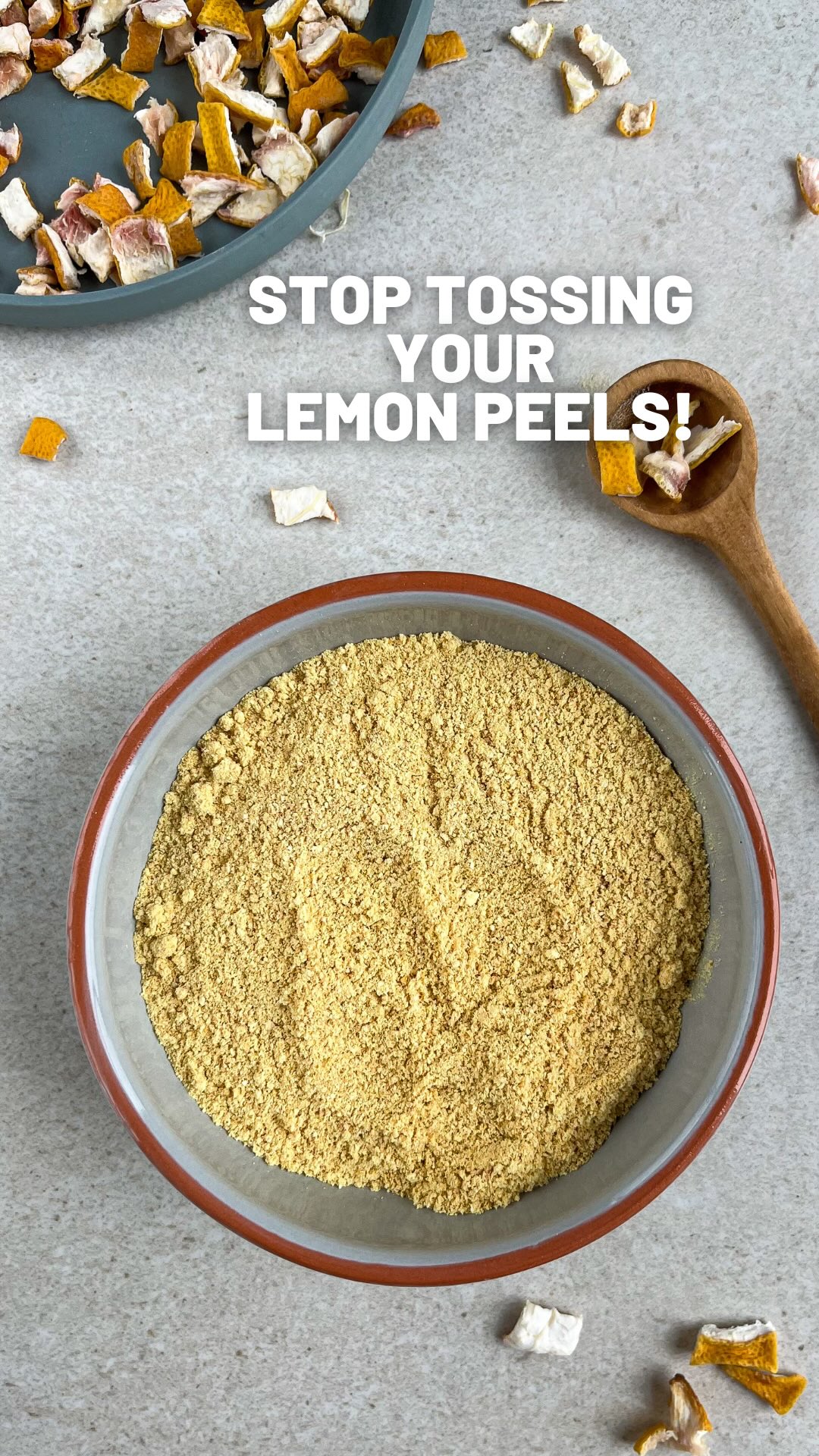


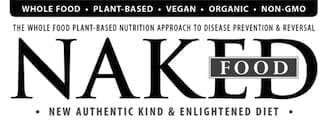




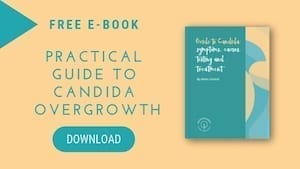

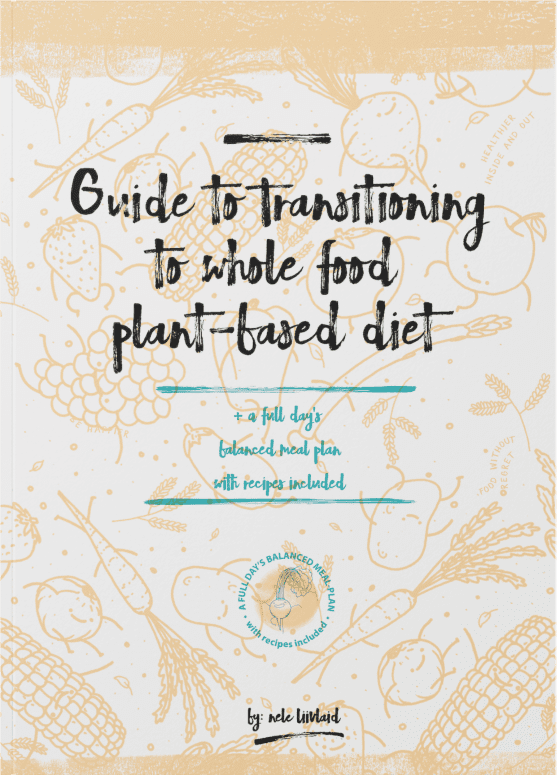
Hi I want to make the Fermented Buckwheat Bread. In your recipe you say to put the bread into a warm oven 35°C what gas mark setting should I use
Hi! I’m sorry, I really don’t know — I’ve never had a gas oven. It might be that they don’y go as low. Better to use room temperature in this case.
Dear Nele Liivlaid
Thank you so much for the amazing information you sent me
Is it possible to contact you, and ask about recipes for natural weight loss and for diabetics.
Thank you
Yours sincerely
S. Stern
+447855842901
Hi there! I just sent you an email! 🤗